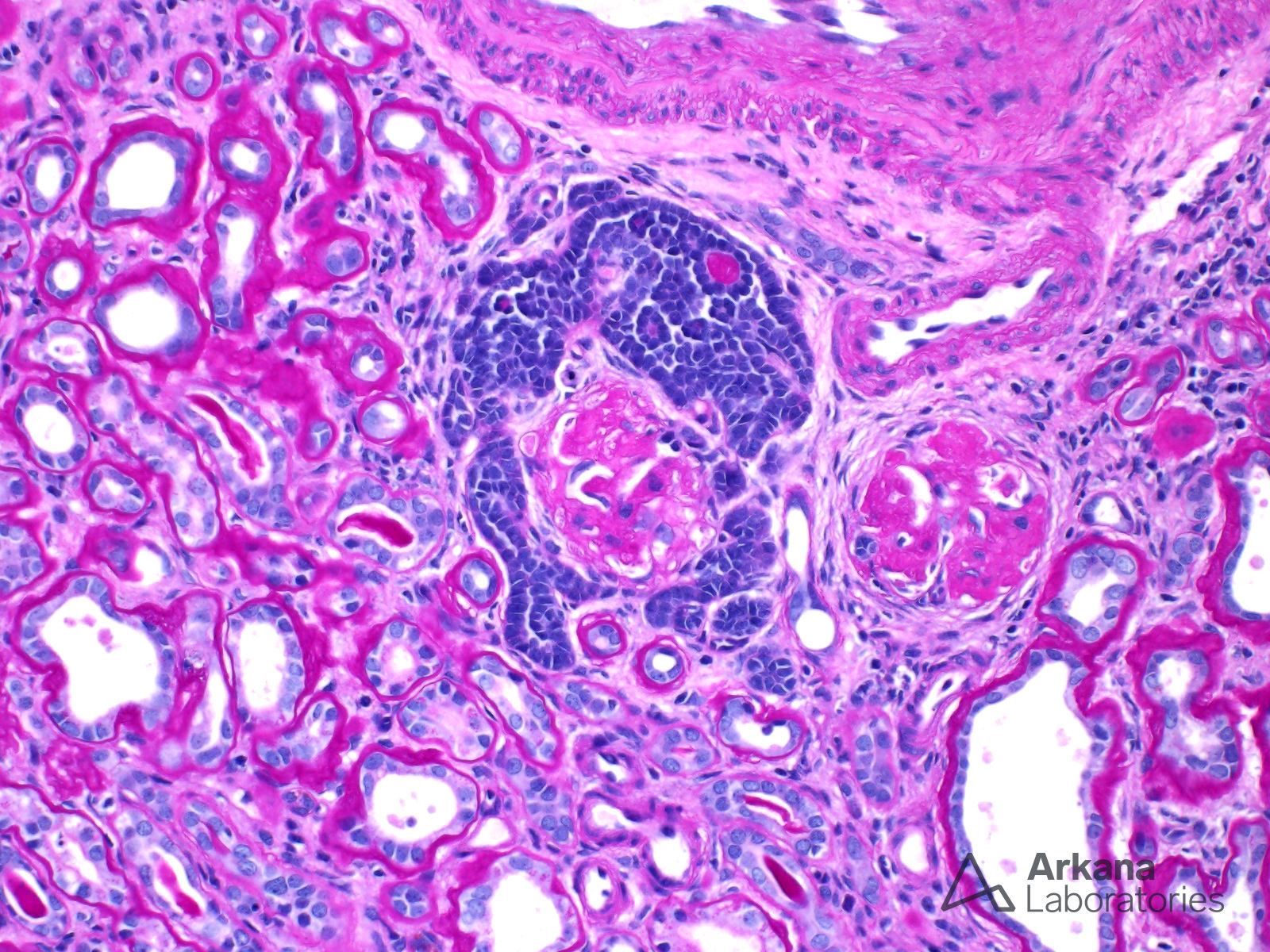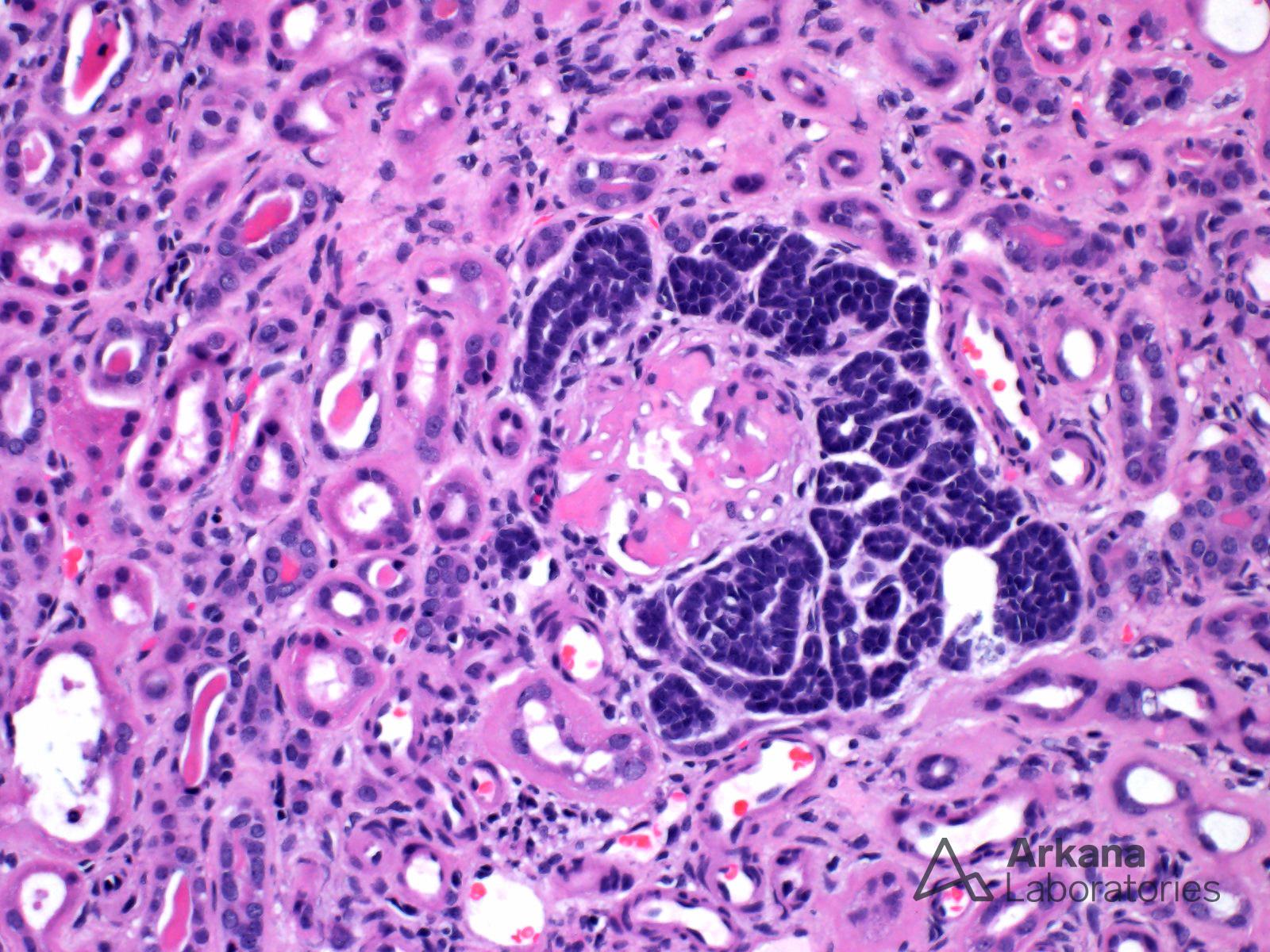H&E and PAS-stained sections from the kidney of an 8-year-old male with advanced nephrosclerosis of unknown etiology. An exuberant proliferation of epithelial cells with an embryonal or immature appearance, arranged in a tubular and nodular pattern, is seen surrounding globally sclerotic glomeruli. This unusual finding termed “embryonal hyperplasia/metaplasia of Bowman’s capsule epithelium” has been described in patients with end-stage renal disease on long-term dialysis. More recently, this finding has also been associated with WT1 mutations in patients with Denys-Drash syndrome and isolated diffuse mesangial sclerosis. The clinical significance of this finding is yet to be determined.

References:
1. Hughson MD, McManus JFA, Hennigar GR. Studies on “end-stage” kidneys. II Embryonal hyperplasia of Bowman’s capsular epithelium. Am J Pathol. 1978; 91: 71-84.
2. Fukuzawa R, Eccles MR, Ikeda M, et al. Embryonal hyperplasia of Bowman’s capsular epithelium in patients with WT1 Pediatr nephrol. 2003; 18: 9-13
Quick note: This post is to be used for informational purposes only and does not constitute medical or health advice. Each person should consult their own doctor with respect to matters referenced. Arkana Laboratories assumes no liability for actions taken in reliance upon the information contained herein.



